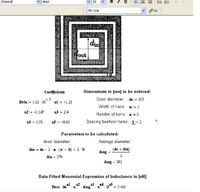ahmad_abdulghany
Advanced Member level 4
- Joined
- Apr 12, 2005
- Messages
- 1,206
- Helped
- 102
- Reputation
- 206
- Reaction score
- 22
- Trophy points
- 1,318
- Location
- San Jose, California, USA
- Activity points
- 11,769
how to read a coil value
Hello all,
concerning the Rx here:
**broken link removed**
Does anyone konws how did he model that coil on board? it's used together with a 100nF to tune the frequency of the Rx...
How to make similar coils with different values?
Thanks in advance,
Ahmad,
Hello all,
concerning the Rx here:
**broken link removed**
Does anyone konws how did he model that coil on board? it's used together with a 100nF to tune the frequency of the Rx...
How to make similar coils with different values?
Thanks in advance,
Ahmad,
